Unit Circle Introduction and Conversion of Radians and Degrees
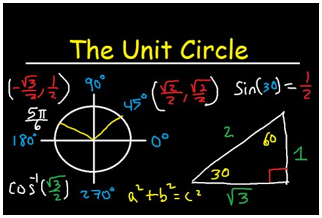
Unit Circle Introduction
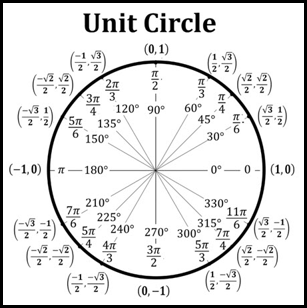
Section Overview
· To enable students to become familiar with the unit circle.
· To use the unit circle to evaluate the trigonometric functions
sin, cos, and tan for all angles.
Key Vocabulary:
Positive
and Negative Angles - Positive
angles can be found in Quadrants I & II. Negative angles can be found in Quadrants
III & IV.
Coterminal
Angles - Two angles are coterminal if
they are drawn in the standard position and both have their terminal sides in
the same location.
What is the Unit Circle?
The unit circle has a radius of one. The
intersection of x and y-axes (0, 0) is known as the origin. The angles on the
unit circle can be in degrees or radians.
 |
The circle is divided into 360 degrees starting on the right side of the x-axis and moving counterclockwise until a full rotation has been completed. In radians, this would be 2π.
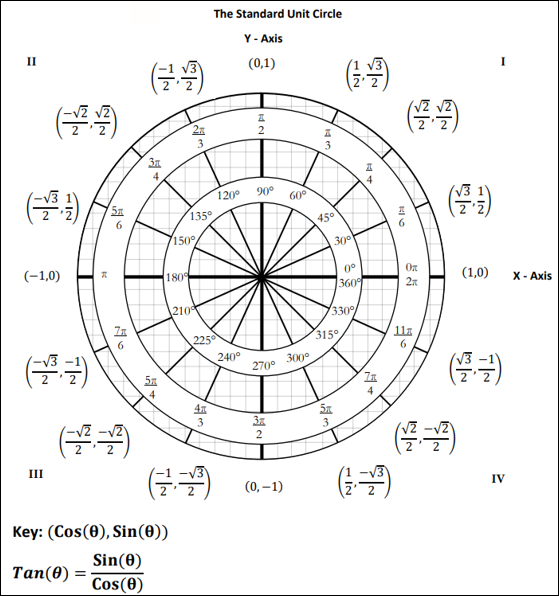 |
The Unit Circle
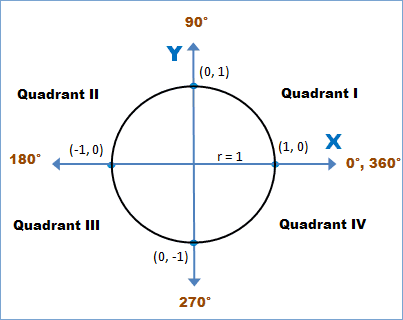 |
This is important to remember when we define the X and Y Coordinates around the
Unit Circle. The Unit Circle has 360°. The Unit Circle has 360°. In
the above graph, the Unit Circle is divided into 4 Quadrants that split the
Unit Circle into 4 equal pieces. Each piece is exactly 90°.
Question: Why is each section / Quadrant equal to 90°?
Answer: 
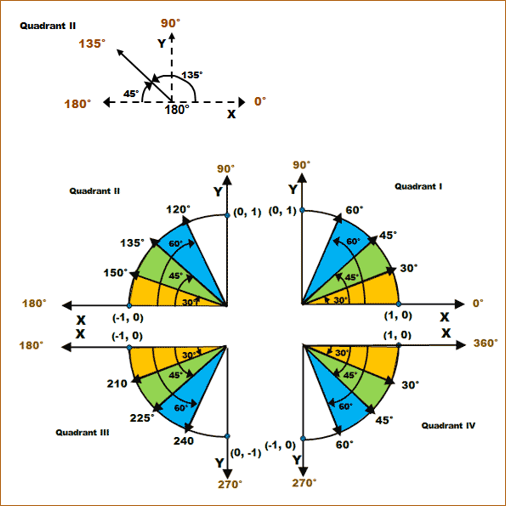 |
The Formula for Calculating
Radians is: 
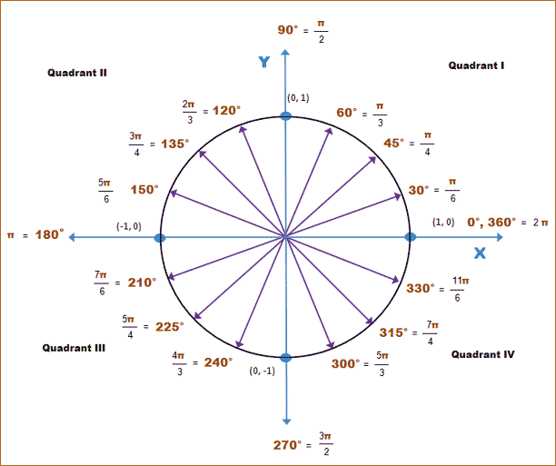 |
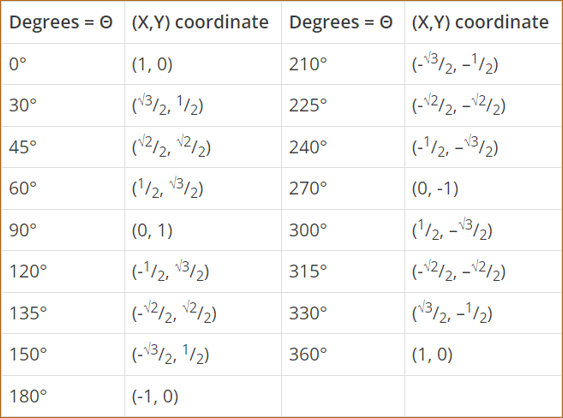 |
Let’s Practice.
UNIT
CIRCLE QUIZ ALL VALUES (purposegames.com)
Converting from Radians and Degrees
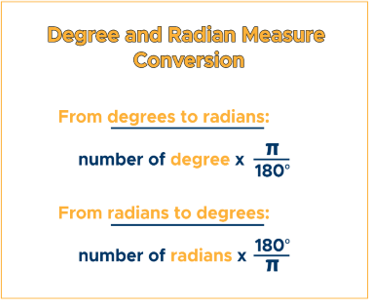
Section Overview
● Convert radians to
degrees.
● Convert degrees to radians.
● Solve problems
involving degrees and radians.
Key Vocabulary:
Degree of a Circle - 360 degrees
Radian of a Circle - An angle whose corresponding arc in a circle is equal to the
radius of the circle.
Radian to Degree Measure
The measure of an angle is
determined by the amount of rotation from the initial side to the terminal
side. In radians, one complete counterclockwise revolution is 2π and in
degrees, one complete counterclockwise revolution is 360°. So, degree measure and radian
measure are related by the equations 360° = 2π radians and 180° = π
radians
From the latter, we
obtain the equation 1 radian =  . This leads us to the rule to convert radian measure
to degree measure. To convert from radians to degrees, multiply the
radians by
. This leads us to the rule to convert radian measure
to degree measure. To convert from radians to degrees, multiply the
radians by 
Example 1: Convert π/4
radians to degrees.

Example 2: Convert 9π/5 radians to degrees.

Example 3: Convert 3 radians to degrees.

Degree to Radian Measure
The measure of an angle is
determined by the amount of rotation from the initial side to the terminal
side. In radians, one complete counterclockwise revolution is 2π and in
degrees, one complete counterclockwise revolution is 360°. So, degree
measure and radian measure are related by the equations 360° = 2π radians
and 180° = π radians.
From the latter, we obtain the equation 1°= π/180 radians. This leads
us to the rule to convert degree measure to radian measure. To convert
from degrees to radians, multiply the degrees by π/180° radians.
Example 1: Convert 60° to radian measure.

Example 2: Convert 150° to radian measure.

Let’s Practice.